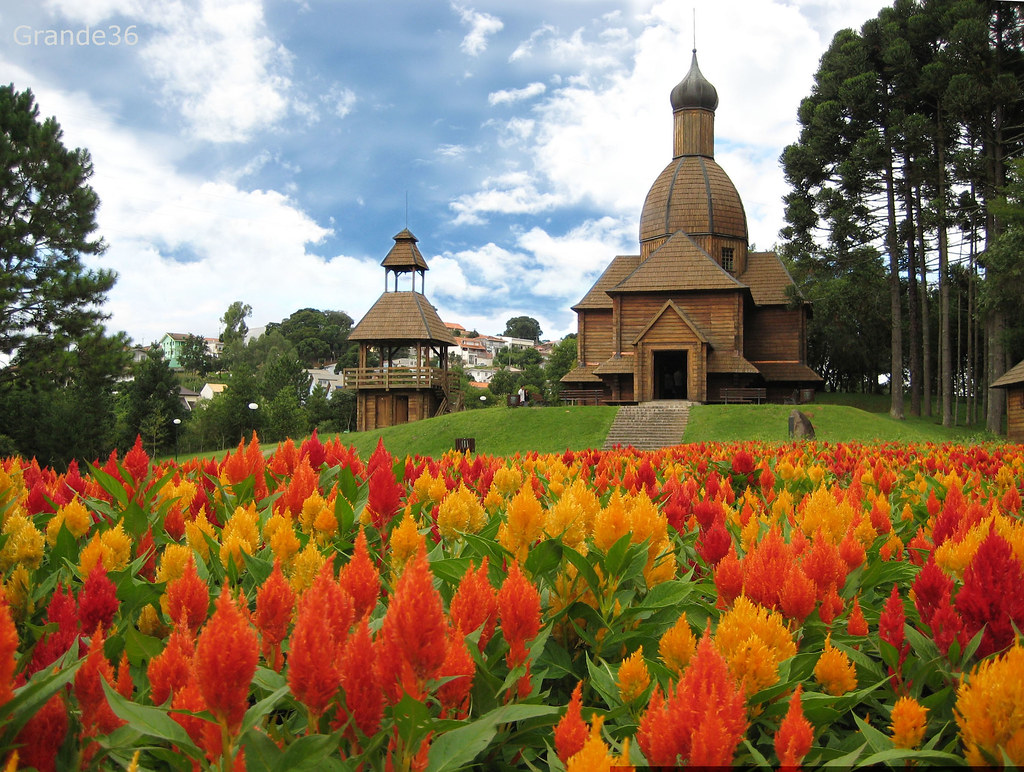Share This Article

The Tingüi Park, named after the Tingüi indians who had lived here, was created in 1994. At the entrance of the park is a gateway which has a statue of Chief Tindiqüera sculpted in bronze. He was the leader of the tribe Tingüi, and this statue pays homage to all indigenous people who inhabited this region. According to the legend, this Tindiqüera indicated this location for the early colonists, where they could found their settlement Nossa Senhora da Luz dos Pinhais, thereby using the legendary word: “Aqui! (Here!)”. This settlement became the city of Curitiba.
Tingui is one of the main parks in Curitiba and is part of a broader project that provides for the establishment of parks across the river Barigui, being a continuation of Barigui Park. It covers an area of 380,000 square meters with lakes, a covered wooden bridge, a playground, a bike path and plenty of green area for tourists to enjoy the park.

Tingüi Park is one of the main parks in Curitiba and is located in the northern part of the city, in the neighbourhood of St. John. For visitors, there is a cycleway and a jogging track along the river, with areas for sports and barbecues.

Ukrainian immigrants to Brazil in the late 19th century/en.wikipedia.org
In the nineteenth century, many European migrants followed the colonists. In 1824, the first German migrants had already arrived in the south of Brazil. Almost fifty years later, Italian migrants arrived, followed by migrants from Austro-Hungarian. Among them were many Polish and Ukrainians. Other migrant groups originated from another former empire: the Ottoman Empire, from Syria, Lebanon, and Armenia.

Photo rcub.com.br
These migrants have been nicknamed “Turcos” for a very long time, thereby referring to the empire of their origin.

Photo rcub.com.br
Between 1870 and 1920, a total number of sixty thousand Polish and fifty thousand Ukrainians had arrived in Brazil. They mainly worked in the agricultural sector.

Location of the State of Paraná in Brazil.
The Ukrainian migrants settled themselves mainly in the state of Paraná, and in fewer numbers, in the neighboring states of São Paulo, Santa Catarina, and Rio Grande do Sul. Ukrainian societies were created in the Brazilian cities of Prudentópolis, Antônio Olinto, Mallet, and in Curitiba.

They kept their culture and traditions intact, and still blessings of the meals take place, at the vesper of Easter. At present, the entire population of Ukrainian migrants and their kin is estimated to be more than 400 thousand people; One of the most famous Ukrainian Brazilians is the author Clarice Lispector.

The Ukrainian Memorial consists of a wooden entrance gate, that leads to the replica of a typical Ukrainian St. Michael the Archangel, a traditional Ukrainian style house, an outdoor stage where performances take place and the entrance way portal. The interior of the church has no religious function, it is a small museum in which are displayed icons of the Orthodox Church and Ukrainian .
The original, the São Miguel da Serra do Tigre, is located in Mallet, a city in the south of the state of Paraná; Inside this church, there are permanent exhibitions of pêssankas (typical decorated eggs) and icons. Outside, there is a replica of a Ukrainian migrant’s cottage, as they were built in the nineteenth century.

The memorial was founded in 1995, thereby commemorating the first centennial of the arrival of the first Ukrainian migrants, in 1895.
Location /Address:
Parque Tingui, Curitiba, Parana, Brasil
Av Fredolin Wolf, sn ° / Rua José Casagrande, sn ° – SAINT JOHN. Tel: (41) 3240-1103 (Memorial) / 3338-2909 (Crafts).
Hours / Opening hours:
Park – daily / Memorial – Tuesday to Sunday from 9 to 18h / Crafts Shop – Tuesday to Sunday from 14:30 to 18h.
Coach / Bus:
Conventional Raposo Tavares, or Julius Wolf Fredolin Graff (memorial) (Pça Tiradentes). Down in front of the park.
Access / Access:
Rua Barão do Serro Azul / Trav. Nestor de Castro / Rosario Street / Rua Duque de Caxias / / Rua Barao de Antonina / Rua Mateus Leme / Rua João Gava / Fredolin Wolf Av.
Religious Tourism
Photo skyscrapercity.com
